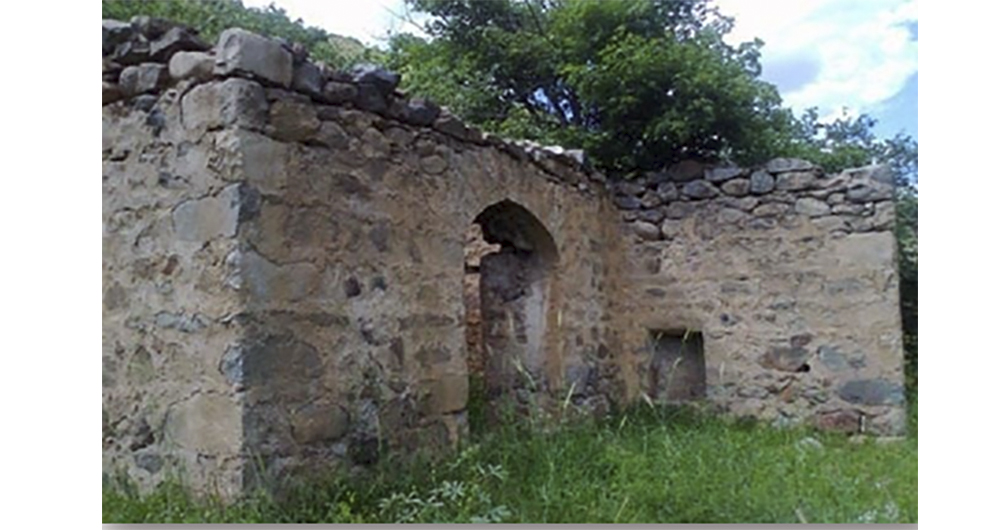Ancient serdab in Lehvaz village
In Lehvaz village of Mighri district, Zangazur uezd.
On 7.11.1995, it was included in the administrative territory of Sunik governorate. Mighri district - Meghri, Lehvaz.
Architecture
The remains of the ancient serdab located in the village of Lehvaz remain today.
There were two villages named Lehvaz in Meghri district. First Lehvaz, Second Lehvaz. Later, these villages were united and a village called Levaz was created. The village, which has an ancient history, has a historical building with a tomb and a serdab in the style of eastern architecture, built of river stone, lime and plastered with lime. In 1831 15, 172 in 1873, 375 in 1886, 346 in 1897, 525 in 1904, 836 in 1914, only Azerbaijanis lived in the village. Since 1918, the village has been subjected to Armenian aggression, and its inhabitants have been deported. After the establishment of the Soviet government in modern Armenia, those who left the village were able to return to their historical and ethnic lands. 189 Azerbaijanis lived here in 1922, 145 in 1926, 171 in 1931, and 1002 in 1987. In November 1988, Azerbaijanis from the village were deported from their historical and ethnic lands by the Armenian state. Armenians live there now.
The toponym is derived from the ethnonym Leh from the Scythian tribes mentioned in Strabo's "Geography" and the Turkish word bayz//bays, which means “a steep rock, a mountain next to a river flowing in a narrow gorge at the foot of a swollen rock”. This word is also used in some forms in Azerbaijani toponomy, meaning “a ridge, a hill, a high place”. It is an ethnotoponym. It is a structurally complex toponym.
























